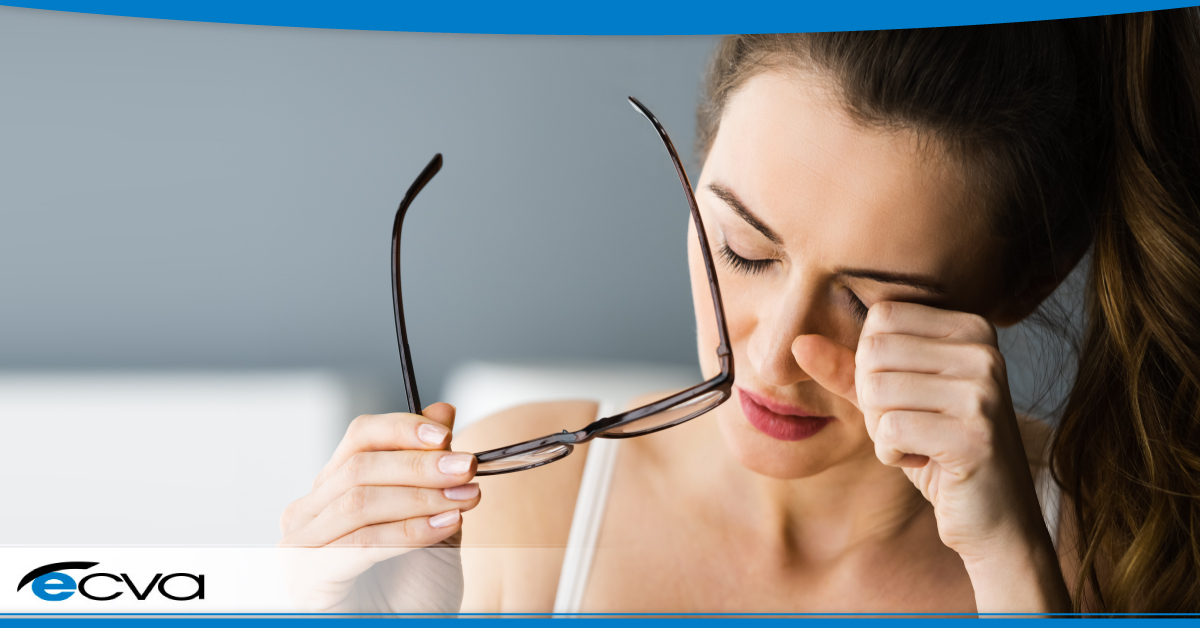For many patients, issues like bumps on your eye are immediately concerning. One common condition is a stye, which usually presents on the eyelid, is typically a bit red, and may or may not come with soreness.
Blocked tear ducts are different. Your tear ducts – also referred to as nasolacrimal ducts – are positioned near the inner corners of the eyes close to the nose, and their main purpose is to drain tears from the eye surface.
If you’re wondering if you have a blocked tear duct, here’s what you need to know.
Symptoms of a Blocked Tear Duct
One of the most common symptoms of a blocked tear duct is watery eyes. When there’s a blockage, tears don’t drain properly, causing them to pool and leading to watery eyes. However, there are other signs of a blocked tear duct, including:
- Blurry vision
- Eye Redness
- Eyelid crusting
- Recurring eye infections
- Mucus or pus discharge
- Ongoing inflammation
- Swelling in the inner corner of the eye
It’s important to note that the symptoms above can also point to a range of other eye conditions. As a result, if they’re present and persistent, it’s best to meet with your eye care provider for a formal diagnosis.
Will Blocked Tear Ducts Clear Up on Their Own?
Blocked tear ducts can clear up on their own. For infants, there is often a membrane that covers the duct, resulting in a blockage. As they grow, the membrane usually opens on its own, resolving the issue.
With adults, blocked tear ducts may resolve if the blockage ultimately clears. In some cases, specific eye care steps can encourage this process, though it may also occur naturally.
However, if there are signs of an eye infection, that may not clear up on its own. Additionally, if the blockage is due to a structural issue, such as an overly narrow tear duct, it often requires treatment from an eye care professional to resolve.
Home Care for Blocked Tear Ducts
There are home treatments for blocked tear ducts. Begin by washing the eye with warm water and a gentle soap to remove any eyelid crusting and reduce the odds of infection.
You can also carefully massage the lacrimal sac, which is the spot where tears drain. Twice a day, use clean fingers to gently rub the lower corners of the impacted eye or eyes for a few seconds to encourage the tear duct blockage to clear.
When to Seek Medical Treatment
Generally, it’s best to speak with your eye care provider if you experience excessive tearing for more than a couple of days. Additionally, if there are signs of infection – such as mucus, pus, or eyelid crusting – making an immediate appointment is best.
Recurring infections also signal the need for treatment from an eye care specialist, ensuring that the root cause of the ongoing problem is addressed. Pain that impacts your daily activities should also be evaluated, as well as long-term discomfort that could signal a persistent issue.
At ECVA, the safety and health of our patients’ eyes are our priority. If you are experiencing symptoms that could indicate a blocked tear duct or simply haven’t seen your eye care provider in the past year, the ECVA team is here to help. Schedule an appointment at your closest ECVA clinic today.







